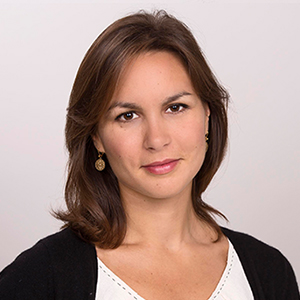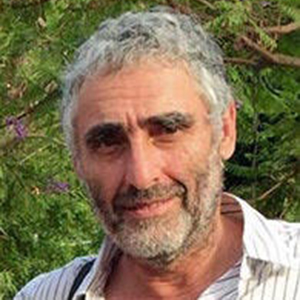Berlin’s micro-city Potsdamer Platz portrays itself as one of the most prominent architectural icons of the future. What might we learn from it about the future of work and workers? Constructed upon the cleansed and barely recognizable remnants of Germany’s painful past—here the Berlin Wall once marked the great Cold War divide; not far from it the “Führerbunker” served as the underground nerve center of the Nazi regime until its collapse—Potsdamer Platz, its designers and promoters assert, has brought into the present a very different future.
Jana Costas is professor in the faculty of business administration and economics at the European University Viadrina in Germany and is working on her ethnographic study “Cleaning Work: Life in the Corporate Underworld of Berlin.’’

Carefully designed high-quality urban artifacts—glass-windowed offices and cubicles of major international corporations, fancy shopping malls, glitzy entertainment centers, expensive hotels, and tourist attractions—are celebrated as symbols of the new metropolitan life in a transnational world. The story Potsdamer Platz tells is seemingly clear: a realized future consisting of the seamless, pleasurable, and timeless intermeshing of comfortable, well paid, fulfilling work and its rewards, in the form of unlimited, leisurely consumption of abundant products, services, and entertainment opportunities from around the world.
But there is more to Potsdamer Platz than meets the eye. Rarely observed by its residents, office workers, and visitors, one finds below this micro-city’s surface a very different world, known to those who work there as the underworld—a four-level-deep, artificially lit labyrinth of endless corridors and storage spaces sustaining the world above it, the upper world. The underworld is populated by workers for whom the world above is the object of hard, often unpleasant and much less rewarding work, intended to keep Potsdamer Platz and its story clean, secure, and functioning. For these workers, typically from the margins of society, the daily residual of the upper-world’s residents’ work and consumption habits are objects of sustained scrutiny, envy, and ridicule and a constant reminder of the very different, often undocumented and unnoted realities of their own lives.
It was to understand this very different darker story that the first author, working as a cleaner, embarked on an ethnographic journey into Potsdamer Platz’s underworld. Here, one morning, at the end of a long corridor in the “minus four’’ area, the underworld’s lowest level, next to the garbage collection point, two well-known images were unexpectedly encountered, hanging from a wall: the Statue of Liberty, and the silent-era actor Harold Lloyd dangling precariously from the hands of a clock high above the city.
The related yet contrasting images speak to the relationship of work, workers, and the future: The Statue of Liberty stands, as the famous inscription at its base suggests, for the utopian promise that the human refuse of the Old World, the “teeming masses yearning to be free,” can find refuge from tyranny and salvation in the New World, and its ethic of worldly and religious success through hard work. Next to it is a representation of the dangers of the dystopian flip-side: Harold Lloyd, the stone-faced tragicomic figure, like his better known contemporaries, Charlie Chaplin and Buster Keaton, full of good intentions, aspirations for a better life, and relentless nervous energy, yet seemingly devoid of emotions, and always one step ahead of disaster. Locked in a symbiotic relationship with a clock, Lloyd, struggling to rise in the world, seems in constant danger of falling into the urban abyss, while desperately trying to survive by clutching the clock’s hands, stopping them from measuring the present and inexorably ticking into the future.
Gideon Kunda is associate professor in the department of labor studies at Tel Aviv University and studies and works with migrant workers and asylum seekers in Israel.

The images reference powerful ideas that in the past have symbolized and motivated change, upheaval, and action, ranging from the incremental to the revolutionary. Located next to the garbage collection point in the underworld, it might seem that these images have lost significance, perhaps as a result of endless reproduction and overuse, becoming symbolic garbage themselves. Yet, to speak of the future, the ideas they represent must be taken seriously. Their message is clear: The larger political and social context of work is crucial to our understanding of the future, and our ability to shape it. In the future, if trends may be extrapolated from what we know from the past and from the unfolding drama of large numbers of desperate refugees attempting to enter Europe, a significant and growing number of workers and work-seekers will come from the margins of society—“teeming masses” of asylum seekers, refugees, guest workers, migrant workers, temporary workers, immigrants legal and illegal, citizens of collapsed regimes. This is the background of almost all workers in Potsdamer Platz’s underworld. Even as some are admitted, even welcomed, they will be in danger of remaining outside the political system in the environments in which they work, or not fully engaged in, protected by, or benefiting from it. They therefore will lack hope for a better future. The Statue of Liberty originally claimed to offer an alternative, a better place. Indeed for many people desperately trying to escape societies in turmoil, such an image seems to be very much alive. But upon arrival, many might find their reality, particularly as they attempt to enter the labor market, closer to that of Harold Lloyd, relentlessly aspiring for success yet dangling over the abyss, or to that of Potsdamer Platz’s underworld workers, already resigned to residing there. Here, whatever the dreams, the waking hours are not the material of Utopia.
Thus, inequality is the central theme for thinking of the future of work and workers. Symbolized by the juxtaposition of Potsdamer Platz’s upper- and underworld, inequality will be found not only in the far reaches of the world (from our point of view), but in our midst. In the future, the physical and informational boundaries between the margins and the center will increasingly blur, and disparities will become harder to ignore. “Invisibilization,” denial and suppression will therefore become an increasingly active accomplishment. The market and the institutions operating in its name, for all their claimed success with the fortunes of the upper world, seem to but enlarge the gaps with the underworld. The challenges for those interested in the future of work and workers are therefore no different from those of the past: political and social analysis and regulation of the so-called free market, and particularly the labor market, of the greedy forces operating in its name, and of the mechanisms that maintain and increase inequality, within and between societies, and hide, distort, or justify their reality and meaning. There is abundant evidence to suggest that otherwise the ghosts of Potsdamer Platz’s past will continue to haunt us.

For the Future of Work, a special project from the Center for Advanced Study in the Behavioral Sciences at Stanford University, business and labor leaders, social scientists, technology visionaries, activists, and journalists weigh in on the most consequential changes in the workplace, and what anxieties and possibilities they might produce.





